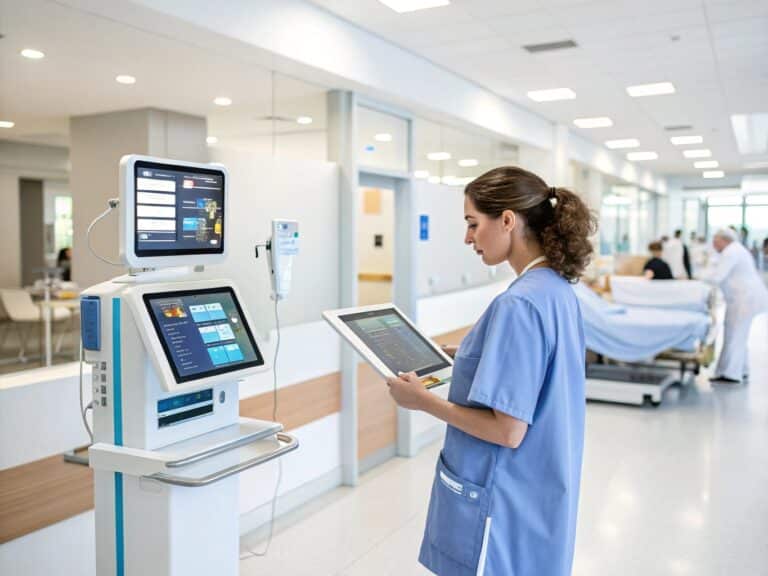Digital Health Solutions Bridge the Healthcare Gap
Healthcare systems worldwide face a persistent challenge: reaching vulnerable populations with life-saving medical services. Remote villages, refugee camps, and impoverished urban areas often remain disconnected from quality healthcare, creating deadly gaps in disease detection and treatment. However, emerging technologies are revolutionizing how medical care reaches these underserved communities.
The transformation centers on portable, intelligent diagnostic tools that bring hospital-quality screening directly to people’s doorsteps. These innovations represent more than technological advancement—they embody a fundamental shift toward healthcare equity.
AI-Powered Tuberculosis Detection Saves Lives
Tuberculosis continues killing over one million people annually, primarily affecting the world’s most vulnerable populations. This ancient disease thrives in conditions of poverty, overcrowding, and limited healthcare access. Traditional diagnostic methods often fail to reach those who need them most.
Revolutionary change comes through artificial intelligence systems that analyze digital chest X-rays with remarkable accuracy. These AI-powered screening tools identify tuberculosis cases instantly, enabling immediate treatment decisions. Mobile healthcare units equipped with this technology can screen entire communities efficiently, detecting cases that conventional health systems miss entirely.
The Global Fund has allocated $193 million between 2021 and 2025 to deploy AI-enabled tuberculosis screening across more than 20 countries. This investment demonstrates how targeted funding can amplify technological impact on a global scale.
Mobile Healthcare Units Transform Community Access
Pakistan exemplifies how mobile technology revolutionizes disease detection in high-burden regions. Mobile clinics equipped with AI-assisted digital X-ray systems conduct on-site screenings, immediately flagging potential tuberculosis cases for follow-up care. This approach eliminates traditional barriers—distance, cost, and complex referral systems—that prevent people from accessing timely diagnosis.
These mobile platforms deliver multiple diagnostic capabilities beyond tuberculosis detection. The same AI systems identify pneumonia, whooping cough, and cardiovascular conditions like cardiomegaly. This multi-disease approach maximizes investment returns while addressing diverse health needs within vulnerable communities.
Measurable Progress in Disease Detection
Recent data reveals dramatic improvements in tuberculosis case identification worldwide. Healthcare systems identified 8.2 million tuberculosis cases in 2023, representing a significant increase from 7.5 million in 2022 and 7.1 million in 2019. This progress becomes even more remarkable when compared to pandemic-era lows of 5.8 million cases detected in 2020.
The number of undiagnosed tuberculosis cases dropped substantially, falling to 2.7 million in 2023 from approximately 4 million in both 2020 and 2021. This reduction means fewer people transmitting disease unknowingly—critical progress since untreated tuberculosis patients can infect up to 15 people annually.
Technology Integration Strengthens Healthcare Systems
AI-powered diagnostic tools create cascading benefits throughout healthcare infrastructure. Single platforms serve multiple functions, improving efficiency while reducing costs. Healthcare workers gain confidence in their diagnostic abilities, leading to better patient outcomes and stronger community trust in medical services.
These technological solutions prove particularly valuable in resource-constrained environments where healthcare funding must achieve maximum impact. By combining tuberculosis screening with detection of other respiratory and cardiovascular conditions, AI systems deliver comprehensive health assessments through single interactions.
Equity-Centered Development Drives Success
Effective healthcare technology requires development partnerships that prioritize community needs and local contexts. The most successful AI tools emerge from collaborative processes involving the communities they serve, ensuring cultural appropriateness and practical applicability.
Countries must lead their own technology adoption strategies, defining priorities that align with specific health challenges and resource constraints. This approach mirrors successful pharmaceutical development models where community involvement drives innovation toward equity rather than profit alone.
Investment Opportunities in Health Technology
Private sector partners and philanthropic organizations possess unique opportunities to accelerate healthcare technology deployment in underserved regions. Resource-constrained settings require external funding support to implement, scale, and maintain AI-powered health solutions effectively.
Strategic investments in health technology create multiplier effects, strengthening primary care systems while building pandemic preparedness capabilities. These dual benefits make healthcare technology attractive to funders seeking high-impact, measurable outcomes.
Responsible AI Implementation Ensures Success
Technology deployment must prioritize transparency, local context sensitivity, and equitable access principles. AI systems require careful calibration to perform accurately across diverse populations, avoiding algorithmic bias that could worsen health disparities.
Successful implementation demands ongoing community engagement, healthcare worker training, and system maintenance protocols. These foundational elements determine whether technological solutions achieve sustained impact or become expensive experiments with limited reach.
Future Potential for Integrated Health Platforms
AI-powered screening represents the foundation for comprehensive health platforms capable of addressing multiple disease categories simultaneously. Future systems could integrate infectious disease screening with noncommunicable disease detection, creating holistic health assessment tools. This integration could mean that current tuberculosis screening investments are becoming building blocks for broader health system improvement.
Remote and low-income communities are gaining access to AI-powered tuberculosis detection and establishing infrastructure that supports expanded healthcare services over time. These tools promise not just improved disease detection, but a radical re-work of how healthcare reaches the world’s most vulnerable populations.
Success requires sustained commitment to equitable development, responsible deployment, and community leadership. With proper support, technology can fulfill its promise of delivering life-saving healthcare to everyone, regardless of geography or economic circumstance.
If you are interested in this topic, we suggest you check our articles:
- LLMs for Medical Revolution: Reinventing Drug Discovery and Development
- The use of AI Image Recognition in Medicine
- AI within Sports Medicine: Can Recovery Times Be Improved?
Sources: Forbes
Written by Alius Noreika

